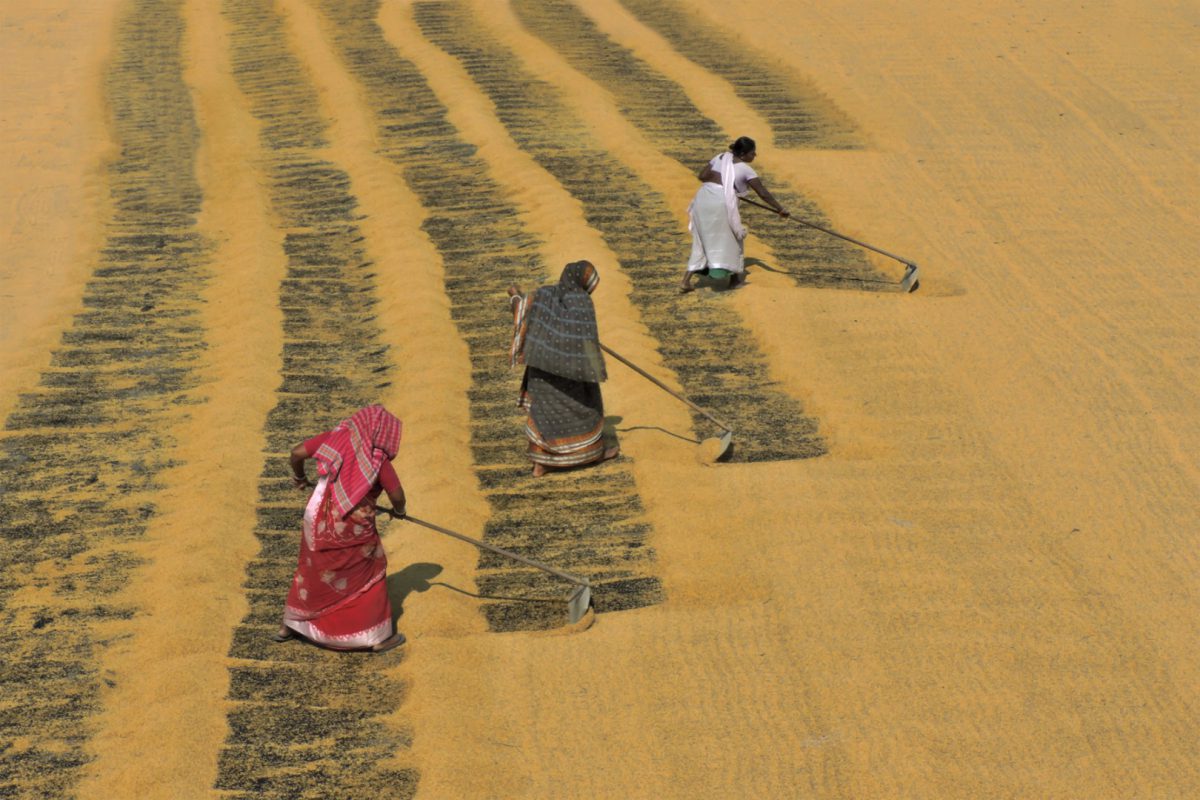At the time of harvest, the moisture content of the rice grains ranges between 18 -25%. Post the harvest, the most critical operation is paddy drying. Drying reduces the moisture content in the grain which is a requisite if it is to be stored. Delaying the drying process or drying it unevenly would result in a qualitative loss. Storing moist grains generally leads to grain discoloration or induces mold development. It further escalates the chances of pest attacks, regardless of the storage facility used. Higher moisture content also decreases the germination rate of rice seeds. The moisture should be further reduced if grains are to be stored for a longer duration.
Before starting with the drying process, certain guidelines need to be followed. The grains should be cleaned so as to avoid uneven Drying and Wet spots. Grains should be dried immediately after the harvest. Depending upon the storage duration, a certain level of moisture content should be maintained.
– 18% for a maximum of 2 weeks
– 14% or less if it’s to be stored for a month/if it is to be milled
– 13% or less if it’s to be stored for 8-12 months
– 9% or less for long-term storage
Grains with different moisture content should not be mixed if cracking is to be avoided.
The drying process involves different methods. Each method has its own elementary advantages and disadvantages.
1. Sun Drying: It is still a preferred technique in many parts of the world mainly because of its low cost. This method, however, is labor-intensive and should not be adopted if you plan to mill the grains.
2. Field Drying: This involves cutting rice panicles in the fields and stacking them into racks and piles. This method sometimes causes a massive heat build-up within the stacks and deteriorates the grains rapidly.
3. In-Store Drying: Grains with the moisture content below 18% are dried slowly inside storage bins. These bins are equipped with aeration components and pre-heated air. It controls the humidity level of the air. It is a slow and gentle drying process and takes from days to weeks.
4. Heated Air Drying: This technique involves high temperatures to rapidly dry the grains. It can be stalled whenever the desired moisture content is achieved. It can be further ramified into 3 categories:
a. Batch Dryer: Used by farmers and small rice millers, this is a labor intensive method and leads to uneven drying.
b. Re-Circulating Batch Dryer: This is put to use by commercial rice millers and cooperatives. It requires moderate capital investment.
c. Continuous Flow Dryer: Generally used by large commercial facilities.
 MAIL US :
MAIL US :
 CALL US :
>
CALL US :
>

4 thoughts on “Paddy Drying Process In Rice Mills”